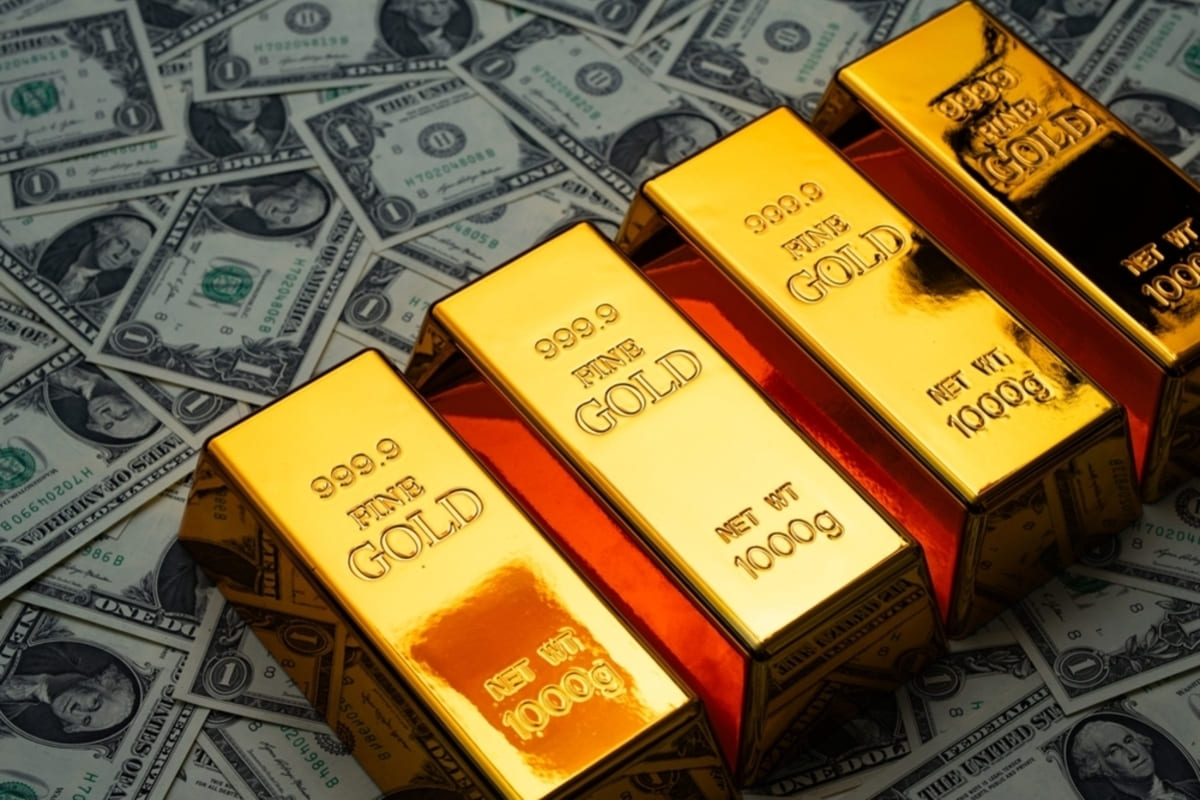





Gold’s Breakneck Rally Tests Markets: From Bank Stress to Jamie Dimon’s U‑Turn

Gold has broken decades of convention and record levels this week, ripping through $4,200 and touching as high as $4,380 an ounce as investors reposition from risk to refuge. The surge — roughly an 8% weekly jump and the largest dollar gain on record — is being driven by a confluence of credit‑quality jitters in the US banking system, renewed US‑China tensions and growing bets that the Federal Reserve will move toward rate cuts next year.

The market readout is unmistakable. Futures on the Comex hit $4,289.90 on Thursday, while Bloomberg tracked intraday peaks nearer $4,380, and silver followed, eclipsing $54. Money flows have been dramatic: more than 15 million ounces of silver were withdrawn from Comex‑linked warehouses last week as traders and refiners scrambled to source physical metal.
Traders describe the move as a classic flight to safety with a modern twist. Concerns about loan books and alleged fraud at regional US banks sparked a spike in volatility — the VIX surged — and pushed asset managers and private investors alike into bullion. “Safe haven bets are clearly favouring gold,” said one market strategist, as liquidity rotated away from equities and even cryptocurrencies.
The momentum has drawn attention from unlikely quarters. Jamie Dimon, long a gold sceptic, signalled what some call a watershed: a rare, measured endorsement that owning bullion can be “semi‑rational” amid stretched asset valuations and inflation uncertainty. Reports that he told colleagues gold could reach $5,000–$10,000 have hardened bullish narratives and encouraged fresh inflows into ETFs and bullion funds.
Central banks, meanwhile, are quietly reinforcing demand. India’s Reserve Bank raised its reported gold holdings to $102.36bn — gold now represents about 14.7% of its reserves — a symbolic reminder that sovereigns view the metal as insurance against currency and geopolitical shocks. Brokers in Mumbai and Delhi report brisk retail buying ahead of the Dhanteras festival, underscoring how cultural demand can amplify macro drivers.
On the supply side, the picture is mixed. Mine output is constrained and exploration financing remains stubbornly tight. Junior explorers in Canada told delegates at a Northern Ontario symposium that while equity prices have rallied, raising capital is still difficult. At the same time, companies such as Santana Minerals are spending to lock in future supply, buying land for proposed mines in New Zealand.
Miners have benefited: Gold Fields set records and a swathe of producers logged sharp gains, yet analysts caution that higher costs, permitting delays and environmental opposition will temper how fast supply can respond. That mismatch — rising demand and sluggish supply — is what analysts point to when sketching paths toward $5,000 and beyond.
The crucible for the next leg remains monetary policy and geopolitics. If the Fed leans into cuts and US‑China relations deteriorate further, safe‑haven flows could persist. Conversely, a rapid restoration of confidence in credit markets or a rebound in real yields could prompt a violent re‑pricing. For now, investors and treasuries alike are treating gold not as an eccentric hedge but as a central counterweight to an increasingly brittle global financial architecture.
Trump’s Tariffs and UK Sanctions Squeeze India’s Economy Amid Global Trade Turmoil
The ripple effects of former President Donald Trump’s aggressive trade policies and the UK’s latest sanctions on Russian oil…
The NFL’s Two Faces on Health: Teaching CPR While Players Bleed from Preventable Hits
As the league rolls out glossy safety campaigns, the product on the field tells a tougher story…